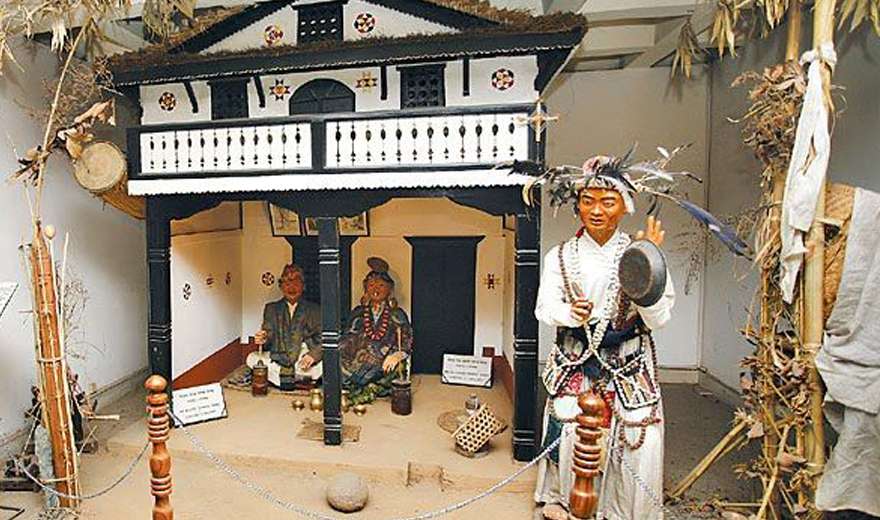- By Dev Kumar Sunuwar
The moment a visitor arrives in Nepal for the first time, he or she is confronted by magnitude of impressions—spectacular mountains, dazzling landscapes, beautiful architecture of Kathmandu and so forth. But for many, it is the people, their culture, lifestyle and so on make the greatest impression.
Nepal is a multi-ethnic, multi-cultural, multi-religious and multi-lingual country. Pluralism and diversity are its unique and notable features. In order to explore these diverse ethnic groups, lively culture, fascinating rituals, you do not have to travel across country, rather a visit to the Nepal National Ethnographic Museum is like a tour around the country within an hour, where one can experience and learn about the culture and lifestyles of different ethnic communities in Nepal.
To explore these diverse ethnic groups, lively culture, fascinating rituals, you do not have to travel across country, rather a visit to the Nepal National Ethnographic Museum is like a tour around the country within an hour, where one can experience and learn about the culture and lifestyles of different ethnic communities in Nepal.
Temporarily located on the first floor of the Nepal Tourism Board (NTB), on the Exhibition road in Kathmandu, the museum obviously is the center for showcasing the distinct culture, fascinating lifestyles of nearly 20 ethnic communities in Nepal.
It has apparently interesting collection of puppets, costumes, traditional crafts, and hosts of ethnographic itemization portraying of entire lifestyles of the community showcased in the exhibition hall. Undoubtedly, the museum serves as a testament to amazing diversity of Nepal’s culture and lifestyles and serves as a center for learning and more importantly, this will be the perfect spot for visitors who cannot afford or cannot spend to reach every part of the country.
The grand plan to build a museum reflecting Nepal’s territorial map at Champadevi, Kirtipur, in southern Kathmandu valley is underway, in which over 100 ethnic settlements, traditional houses, lifestyles, regligions, cultures, etc would be depicted. Towards this end, government has already provided 200 ropanies land. Nearly 15 percent of work such as developing of master plan, mapping of the area have so far finished and by next 7-years, construction of museum will be completed, according to Bam Kumari Budha Magar, Vice-president of the Museum.
The grand plan to build a museum reflecting Nepal’s territorial map at Champadevi, Kirtipur, in southern Kathmandu valley is underway, in which over 100 ethnic settlements, traditional houses, lifestyles, regligions, cultures, etc would be depicted.
She also said that ethnic communities from across the country have come forth for the construction of their traditional buildings and showcase their religious and cultural lifestyles.
The ethnic communities showcased in NTB premises are Gurung, Limbu, Chepang, Thakali, Sherpa, Rai, Tamang, Magar, Tharu, Newar, Sunuwar and Bahun. These communities have their own separate rooms that are filled with auspicious items depicting their socio-ethnic lifestyles. Thami, Uranw (Jhagad), Raute, Dhimal, Chum, Lepcha and Barah Gaunle’s also have varieties of collection like sculpture, arts, crafts, paintings and so on, which reflect mini-Nepal.
According to the officials, the museum aims as a living resource center for both Nepalese and foreigners who are interested to know about diverse ethnic mosaic of the country, diverse culture, customs, lifestyles, and so forth. If you are visiting NTB for tourism service center, you can just step in to the museum paying merely Rs. 25 for adult, Rs. 10 for students Rs. 100 for foreigners and Rs. 50 for SAARC nationals.
This feature article first was published in Travel Nepal magazine in October 2013
